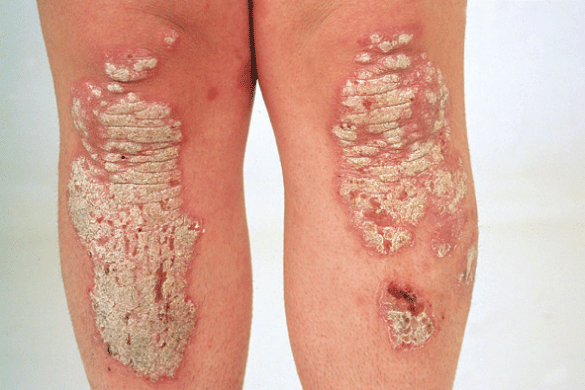
You may have recently heard that Kim Kardashian suffers with psoriasis, so I thought you may want to find out more about this condition.
What is psoriasis, how does it look and how can it be treated?
Psoriasis is a chronic inflammatory skin disease affecting 2–4% of the population. It runs in families in about a third of patients. Psoriasis is more common in Caucasian skin. The condition can start at any age and once it appears, it tends to stay for life, waxing and waning over the months and years.
Psoriasis is an immune-mediated disease with genetic predisposition. Certain triggers such as a bacterial (streptococcal) tonsillitis, tooth infections, antimalarials, nonsteroidal anti-inflammatories and beta blocker medications can cause acute flare-ups. Certain lifestyle factors such as smoking, excessive alcohol consumption, obesity and stress can make psoriasis worse. Injuries including cuts, scratches and sunburn can cause localised flares (so-called koebner phenomenon).
The clinical appearance is characterised by well defined, symmetrically distributed, red, scaly plaques that can appear all over the body, however, the most commonly affected sites are scalp, elbows and knee. The scales typically look silvery white (apart from in skin folds, where they are red, shiny and ‘moist’ looking).
On palms and soles painful skin cracks may occur. The skin tends to be very dry overall, but in contrast to eczema, psoriasis is typically not or only mildly itchy. In some people psoriasis may affect the nails (for example with tiny ice-pick ‘holes’ visible in the nail plate, nail thickening and/or nail deformations). In others the joints may be affected with painful, swollen joints (also known as psoriatic arthritis).
Psoriasis patients are more likely than other people to have associated health conditions such as ‘metabolic syndrome’, a combination of obesity, high blood pressure, high cholesterol, cardiovascular issues and type 2 diabetes.
Psoriasis is usually very stubborn without treatment. Treatment modalities include various steroid and non-steroidal anti-inflammatory creams, vitamin D derivative creams, immunosuppressive tablets, immunomodulating injections (so called ‘biologicals’) and light therapy. When psoriatic plaques clear up with treatment, they may leave darker or lighter coloured patches for several months. Long-term daily application of lipid-rich emollients is of utmost importance.
If you are suffering with psoriasis, make sure to see a dermatologist for help.
Whether you have a medical skin condition which needs treatment or simply want to look your very best, our specialised dermatology team will help you achieve the very best result.

